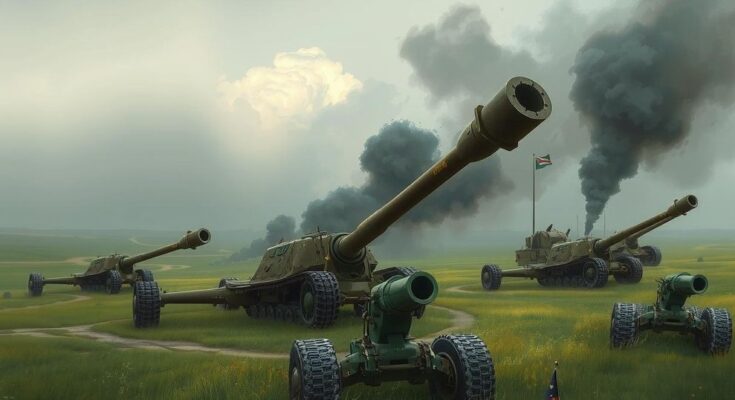Forbes reports a Ukrainian strike potentially damaged three North Korean M1989 howitzers in a coordinated attack. Utilizing drones and HIMARS, Ukraine targeted the howitzers in Kursk Oblast, Russia. The conflict in Kursk reflects heavy losses on both sides, with ongoing Ukrainian resistance against Russian and North Korean forces.
Forbes reports that the Ukrainian 14th Regiment of Unmanned Aerial Systems may have successfully damaged three North Korean M1989 howitzers in a coordinated strike. This engagement occurred on or before March 18, when drone operators detected the howitzers concealed in treelines in Kursk Oblast, western Russia. The drone team relayed the coordinates to a nearby Ukrainian battery, presumably equipped with High-Mobility Artillery Rocket Systems (HIMARS).
The Ukrainian battery, which has received approximately 40 HIMARS units from the United States, launched at least one M30 rocket. This rocket detonated above the treetops, releasing numerous grenade-sized submunitions that targeted the M1989 howitzers and their crews. However, assessing the full extent of the damage inflicted by this strike poses a challenge.
The M1989 Koksan is a heavy North Korean self-propelled artillery system that weighs 40 tons and was publicly displayed for the first time in Koksan during a 1989 parade. Its distinctive 170-mm caliber barrel enables significant range capabilities, with conventional shells reaching up to 40 kilometers, and active-reactive rounds extending up to 60 kilometers.
According to Forbes, North Korea has supplied Russia with a substantial number of military vehicles, including M1989 howitzers, anti-tank missile vehicles, rocket launchers, and air defense systems. Prior to the recent strike, Ukrainian forces had already destroyed at least one M1989 and multiple Bulsae-4 anti-tank launchers, in addition to a Russian drone accidentally destroying a North Korean air defense asset.
Forbes also details that a significant Ukrainian force had sustained a position in Kursk until last week, when the Rubicon Center of Advanced Unmanned Systems executed a significant attack on their supply lines in Sudzha. Concurrently, additional North Korean troops advanced in the region, which exacerbated the Ukrainian forces’ situation, leading to their retreat and leaving behind critical military equipment. Nonetheless, Ukrainian drones and artillery continued to engage Russian and North Korean forces in the area.
Ultimately, Forbes characterizes the events in Kursk as a Pyrrhic victory for the Russians and North Koreans, suggesting they incurred heavy casualties and lost hundreds of vehicles while compelling the Ukrainians to withdraw, which resulted in significant, albeit comparatively lighter, losses for Ukrainian forces.
In summary, the coordinated strike by the Ukrainian 14th Regiment may have inflicted damage on North Korean M1989 howitzers, showcasing the tactical effectiveness of drone and HIMARS coordination. The ongoing conflict in Kursk remains complex, involving substantial military exchanges and losses for both sides. Despite setbacks, Ukrainian forces continue their operations against Russian and North Korean advancements, underlining the volatility of the situation in the region.
Original Source: euromaidanpress.com




